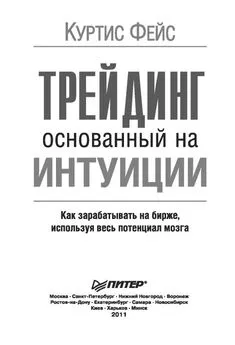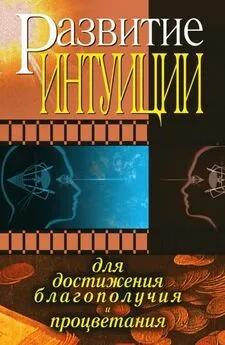Патриция Черчленд - Совесть. Происхождение нравственной интуиции
- Название:Совесть. Происхождение нравственной интуиции
- Автор:
- Жанр:
- Издательство:Альпина нон-фикшн
- Год:2021
- Город:Москва
- ISBN:978-5-0013-9377-1
- Рейтинг:
- Избранное:Добавить в избранное
-
Отзывы:
-
Ваша оценка:
Патриция Черчленд - Совесть. Происхождение нравственной интуиции краткое содержание
Автор уверенно проводит нас по лабиринтам последних открытий в области нейронауки, генетики, эволюции, психологии, психиатрии, антропологии, экономики, политики и философии, объясняя, как формируются эталоны поведения в разных социальных группах и культурах. Обращаясь к эволюции, она показывает, почему мозг ребенка с самых первых дней настроен на формирование эмоциональных связей, сотрудничество и заботу.
Переходя к философии, она выясняет, почему понятие совести играет центральную роль в любом обществе, как нравственные установки передаются из поколения в поколение и почему нормы морали не одинаковы в разных культурах.
Благодаря непревзойденной способности увязывать между собой идеи, лежащие в разных плоскостях, Патриция Черчленд по-новому раскрывает перед нами сложную тему, касающуюся самой сути того, что делает нас людьми.
Совесть. Происхождение нравственной интуиции - читать онлайн бесплатно ознакомительный отрывок
Интервал:
Закладка:
110
С анатомической точки зрения описание очень упрощенное. Подробнее см.: Stephan Lammel, Byung Kook Lim, and Robert C. Malenka, «Reward and Aversion in a Heterogeneous Midbrain Dopamine System», Neuropharmacology 76 (2014): 351–59. Кроме того, должна упомянуть, что некоторые нейробиологи предпочитают термину «прилежащее ядро» несколько более обобщенный анатомический термин «полосатое тело». Тонкости различий между этими двумя названиями для той картины, которую мы описываем в данной книге, несущественны.
111
Кроме того, имеются предположения насчет места, на которое воздействует наркотическое вещество. Взаимосвязь представляется гораздо более сложной и запутанной, чем могло показаться по итогам экспериментов с грызунами. См.: D. J. Nutt et al., «The Dopamine Theory of Addiction: 40 Years of Highs and Lows», Nature Reviews Neuroscience 16 (2015): 305–12.
112
См. уточнение Вероники Альварес: Veronica A. Alvarez: «Clues on the Coding of Reward Cues by the Nucleus Accumbens», Proceedings of the National Academy of Sciences of the United States of America 113, no. 10 (2016): 2560–62.
113
Peter H. Rudebeck et al., «Prefrontal Mechanisms of Behavioral Flexibility, Emotion Regulation and Value Updating», Nature Neuroscience 16, no. 8 (2013): 1140–45.
114
Okihide Hikosaka, «The Habenula: From Stress Evasion to Value-Based Decision-Making », Nature Reviews Neuroscience 11 (2010): 503–13.
115
Прекрасно изложено у: Terry Sejnowski, Deep Brain: Inside the Deep Learning Revolution (Cambridge, MA: MIT Press, 2018).
116
Jeremy Hsu, «Texas Hold’Em AI Bot Taps Deep Learning to Demolish Humans», IEEE Spectrum, March 2, 2017, https://spectrum.ieee.org/automaton/robotics/artificial-intelligence/texas-holdem-ai-bot-taps-deeplearning-to-demolish-humans.
117
T. W. Robbins and A. F. T. Arnsten, «The Neuropsychopharmacology of Frontoexecutive Function: Monoaminergic Modulation», Annual Review of Neuroscience 32, no. 1 (2009): 267–87.
118
M. Konnikova, «The Struggles of a Psychologist Studying Self-Control», New Yorker, October 9, 2014, https://www.newyorker.com/science/maria-konnikova/struggles-psychologist-studying-self-control.
119
Silvia U. Maier, Aidan B. Makwana, and Todd A. Hare, «Acute Stress Impairs Self-Control in Goal-Directed Choice by Altering Multiple Functional Connections within the Brain’s Decision Circuits», Neuron 18, no. 3 (2015): 621–31.
120
Kent C. Berridge, Terry E. Robinson, and J. Wayne Aldridge, «Dissecting Components of Reward: ’Liking,’ ’Wanting,’ and Learning», Current Opinion in Pharmacology 9, no. 1 (2009): 65–73.
121
A. D. Redish, «Addiction as a Computational Process Gone Awry», Science 306, no. 5703 (2004): 1944–47.
122
Terrence J. Sejnowski et al., «Prospective Optimization», Proceedings of the IEEE 102, no. 5 (2014): 799–811.
123
Terry Lohrenz et al., «Neural Signature of Fictive Learning Signals in a Sequential Investment Task», Proceedings of the National Academy of Sciences of the United States of America 104, no. 22 (2007): 9493–98.
124
Если точнее, то в вентральном стриатуме. Прилежащее ядро — это его составная часть.
125
Rosalyn Moran, цит. в: Virginia Tech, «Keep Calm and Carry On: Scientists Make First Serotonin Measurements in Humans», Medical Xpress, April 30, 2018, https://medicalxpress.com/news/2018–04-calm-scientists-serotonin-humans.html.
126
Read Montague, цит. в: Virginia Tech, «Keep Calm and Carry On».
127
A. P. Steiner and A. D. Redish, «The Road Not Taken: Neural Correlates of Decision Making in Orbital Frontal Cortex», Frontiers in Neuroscience 6 (2012): 131, https://doi.org/10.3389/fnins.2012.00131.
128
R. Eisenberger, «Achievement: The Importance of Industriousness», Behavioral and Brain Sciences 21 (1998): 412–13.
129
См.: Coursera, «Learning How to Learn: Powerful Mental Tools to Help You Master Tough Subjects», ссылка действительна по состоянию на 29 августа 2018 года, https://www.coursera.org/learn/learning-how-to-learn.
130
Ann M. Graybiel, «The Basal Ganglia and Cognitive Pattern Generators», Schizophrenia Bulletin 23, no. 3 (1997): 459–69.
131
Ann M. Graybiel, «Habits, Ritual, and the Evaluative Brain», Annual Review of Neuroscience 31 (2008): 359–87.
132
Alan Bennett, «Diary» [April 17, 2013], London Review of Books 36, no. 1 (January 9, 2014): 34–55.
133
Обзор детских способностей к научению за счет наблюдения и помощи см.: Barbara Rogoff et al., «Firsthand Learning through Intent Participation», Annual Review of Psychology 54 (2003): 175–203. См. также: Ruth Paradise and Barbara Rogoff, «Side by Side: Learning by Observing and Pitching In», Ethos 37 (2009): 102–38.
134
Elizabeth A. Reynolds Losin et al., «Own-Gender Imitation Activates the Brain’s Reward Circuitry», Social Cognitive Affective Neuroscience 7, no. 7 (2012): 804–10.
135
Susan Perry, «Social Traditions and Social Learning in Capuchin Monkeys (Cebus)», Philosophical Transactions of the Royal Society of London. Series B, Biological Sciences 366, no. 1567 (2011): 988–96.
136
См.: Knoxville Zoo, «This Is Einstein!» YouTube, July 26, 2008, https://www.youtube.com/watch?v=nbrTOcUnjNY.
137
V. Wörmann et al., «A Cross-Cultural Comparison of the Development of the Social Smile: A Longitudinal Study of Maternal and Infant Imitation in 6- and 12-Week-Old Infants», Infant Behavioral Development 35 (2012): 335–47, https://doi.org/10.1016/j.infbeh.2012.03.002. Epub June 19, 2012.
138
K. Tchalova and N. I. Eisenberger, «How the Brain Feels the Hurt of Heartbreak: Examining the Neurobiological Overlap between Social and Physical Pain», in Brain Mapping: An Encyclopedic Reference, ed. Arthur W. Toga (New York: Academic Press, 2015), 15–20; N. I. Eisenberger, «The Pain of Social Disconnection: Examining the Shared Neural Underpinnings of Physical and Social Pain», Nature Reviews Neuroscience 13 (2012): 421–34.
139
C. C. Ruff and E. Fehr, «The Neurobiology of Rewards and Values in Social Decision-Making », Nature Reviews Neuroscience, 15 (2014): 549–62. См. также: M. J. Crockett et al., «Moral Transgressions Corrupt Neural Representations of Value», Nature Neuroscience 20, no. 6 (2017): 879–85.
140
P. La Cerra and R. Bingham, The Origin of Minds (New York: Harmony Books, 2002); J. Z. Siegel, M. J. Crockett, and R. J. Dolan, «Inferences about Moral Character Moderate the Impact of Consequences on Blame and Praise», Cognition 167 (2017): 201–11.
141
Roy F. Baumeister, Evil: Inside Human Violence and Cruelty (New York: Holt, 1997), 223.
142
M. V. Mestre et al., «Are Women More Empathetic than Men? A Longitudinal Study in Adolescence», Spanish Journal of Psychology 12, no. 1 (2009): 76–83; L. Christov-Moore et al., «Empathy: Gender Effects in Brain and Behavior», Neuroscience & Biobehavioral Reviews 4 (2014): 604–27.
143
V. Toccaceli et al., «Adult Empathy: Possible Gender Differences in Gene-Environment Architecture for Cognitive and Emotional Components in a Large Italian Twin Sample», Twin Research and Human Genetics 21, no. 3 (2018): 214–26, https://doi.org/10.1017/thg.2018.19.
144
«Frans de Waal, Primatologist» [TED speaker, TEDx organizer], TED Talks, accessed August 29, 2018, https://www.ted.com/speakers/frans_de_waal.
145
Malini Suchak et al., «How Chimpanzees Cooperate in a Competitive World», Proceedings of the National Academy of Sciences of the United States of America 113, no. 36 (2016): 10215–20.
146
Alvin Roth et al., «Bargaining and Market Behavior in Jerusalem, Ljubljana, Pittsburgh and Tokyo: An Experimental Study», American Economic Review 81 (1991): 1068–95.
147
Joseph Henrich et al., «In Search of Homo economicus: Behavioral Experiments in 15 Small-Scale Societies», American Economic Review 91, no. 2 (2001): 73–78.
148
Ting Xiang, Terry Lohrenz, and P. Read Montague, «Computational Substrates of Norms and Their Violations during Social Exchange», Journal of Neuroscience 33, no. 3 (2013): 1099–108.
149
Рассел, Бертран. История западной философии. Пер. В. В. Целищева.
150
Woo-Young Ahn et al., «Nonpolitical Images Evoke Neural Predictors of Political Ideology», Current Biology 24, no. 22 (2014): 2693–99.
151
Необходимо учесть, что в ходе фМРТ активность мозга измеряется не напрямую, а по изменениям в уровне кислорода в крови. BOLD-сигнал (ответная реакция зависимости уровня кислорода в крови) рассматривается как косвенный показатель нейронной активности.
152
Опросник Уилсона — Паттерсона представляет собой список утверждений, напротив которых заполняющий ставит отметки «да», ″?″ или «нет», оценивающиеся в 3, 2 и 1 балл соответственно. См.: T. J. Bouchard Jr. et al., «Evidence for the Construct Validity and Heritability of the Wilson-Patterson Conservatism Scale: A Reared-Apart Twins Study of Social Attitudes», Personality and Individual Differences 34 (2003): 959–69.
153
Ahn et al., «Nonpolitical Images Evoke Neural Predictors», 2693.
154
M. D. Dodd et al., «The Political Left Rolls with the Good and the Political Right Confronts the Bad: Connecting Physiology and Cognition to Preferences», Philosophical Transactions of the Royal Society of London. Series B, Biological Sciences 367, no. 1589 (2012): 640–49, https://doi.org/10.1098/rstb.2011.0268.
Читать дальшеИнтервал:
Закладка:










